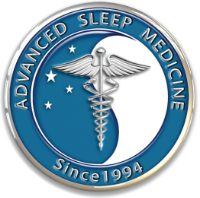
If you’re new to PAP (positive airway pressure) therapy to treat your sleep apnea, you probably have some questions about how often to use your new device, how to care for your machine, and how to troubleshoot some common snags. That’s why we at the Sleep Better, Live Better blog have compiled a list of CPAP-related FAQs to help answer some of your more pressing questions!
1. For how long will I have to use my PAP machine?
Since using your PAP machine is the most certain way to ensure that you get a full, revitalizing, and healthy night’s sleep, you will probably continue to use it as long as your condition persists. For more information about a typical timeline for treating your sleep apnea, check out our 10 Steps to Treating Your Sleep Apnea Infographic!
2. Will I have to use the PAP machine every night?
You should use the machine as ordered by your physician. However, it is generally recommended that you use the PAP machine every night.
If at first you experience difficulty sleeping with the device for long periods, it is recommended that you start by using the machine for as long as you can. Then, add 30 minutes to an hour to your usage time nightly, until you have fully adapted to the device. Before you know it, you’ll be enjoying a deep and complete night of sleep!
3. How do I clean my Mask?
Daily: Wash your mask system with warm, soapy water. Rinse well and allow to air dry out of direct sunlight.
Weekly: Separate and hand-wash the mask components and headgear in warm, soapy water and let dry as instructed above.
*When cleaning your mask, use soaps without added scents, such as plain Ivory® liquid soap or baby shampoo. Do NOT use solutions containing vinegar, bleach, chlorine, alcohol, aromatics, moisturizers, antibacterial agents or scented oils; they can damage the mask!
4. My mask leaks air and is uncomfortable; what should I do?
All masks are designed with exhalation ports where air is released, so if you notice air leaving these small apertures, this is OK. What's important is to not have air blowing around your face and in to your eyes. If this happens, contact your doctor or CPAP technician.
5. Sometimes I sense dryness in my nose, mouth, or throat; what should I do?
A heated humidifier specifically designed for your PAP device may help reduce dryness. Contact your physician or PAP technician to learn more about humidifiers, or check our blog post on PAP accessories and resupply.
6. How much and what kind of water should I use with the heated humidifier?
Most humidifiers have a maximum water level line that you can refer to. The water used with the humidifier needs to be distilled water and must be changed daily.
7. At times it feels like I'm getting too much or too little air; what should I do?
The air pressure on your device is normally based on the results of your sleep diagnostic test. It can take up to eight weeks for you to fully adapt to this pressure. However, if you feel like the pressure is causing you excessive difficulty, we recommend that you contact your physician.
8. How often will my other PAP supplies, like filters, tubing, and masks, last and how do I get them replaced?
Replacing your PAP supplies regularly is an extremely important step in ensuring the most effective and healthy sleep apnea treatment. Just like you swap out your toothbrush and razors, PAP equipment must be replaced to make sure that PAP setup remains sanitary and fully functional. Several components of your PAP setup need to be replaced with frequency—even on a monthly basis—in order to function optimally. Check out our blog post on CPAP resupply for a complete breakdown of PAP-related equipment and when it needs to be replaced.
If you have any other relevant questions about your CPAP or BiPAP machine, feel free to leave them in the comments, and we might just add them to our FAQ list so everyone can benefit from them!



